How Learn.co Started
The Learning Management System we build at Flatiron School is probably most responsible for our success and growth. Learn.co allowed us to create an online campus that commanded a price point unheard of in the market and scale beyond our physical campus spray-painted walls. Ultimately, Learn.co was responsible for over 60 million in annual revenue. We even sold a copy of it to 2U for 8 figures. Here's how it came to be and why it was so special.
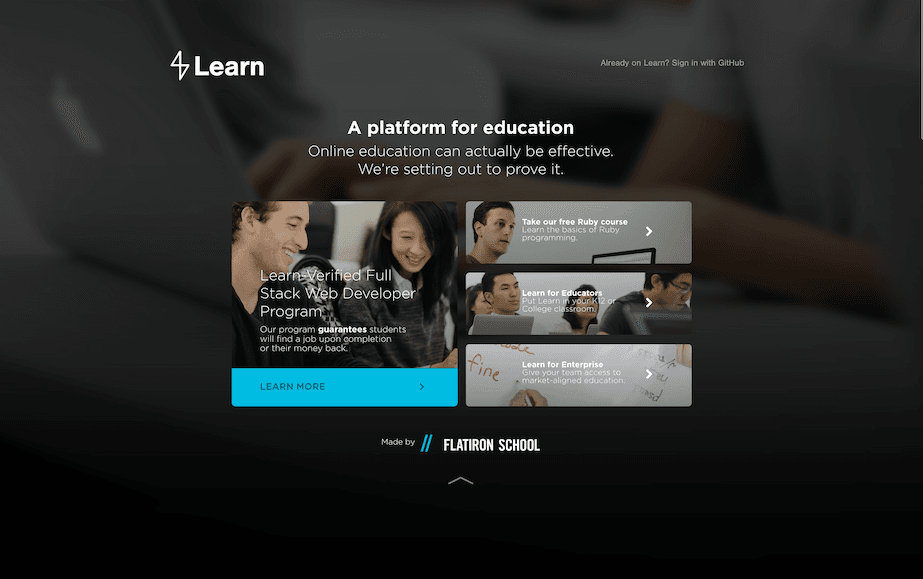
I would say Learn.co was born on a Sunday, probably in August 2013, I think 9 months into Flatiron School or so. The school was growing and for the first time ever there were 3 concurrent cohorts being run by 3 different lead instructors. I had a curriculum I had used that I assumed everyone else was using.
I quickly found out that wasn't the case, they were using it, but they were adding their own flavor to it. And I wanted it. It occurred to me that this was only going to happen more. Different instructors would inevitably add to and shape whatever content we gave them. Unless we had a mechanism to track all these changes and to on some level, enforce certain standards, scale and quality would be impossible.
A Sunday Meeting?!?!
The faculty (all like six of us) taught all day so we could not really meet to brainstorm during the workday. I had some ideas of how to solve this problem but I work so much better with people to bounce off. Needless to say, no one was pleased to have to come in on a Sunday to listen to me rant and argue with me about a solution to what no one thought was a problem.
But this is where I live, this is where I shine, seeing the upstream problem and coming up with a really creative solution. I imagined we'd have dozens of lead instructors and that some would be good and others not as good. Some would be able to create quality content, others wouldn't, and then others would think they could, but couldn't. That's what I was most scared of, the curriculum, one of the cornerstones of Flatiron School, bifurcating and losing quality.
It seemed to me we need a way for lots of people to share the curriculum at once, each maintain their own copy that could easily be monitored from the canonical, where changes could be taken and integrated across copies, and versioning was built in so you could rollback mistakes. If only such a system existed.
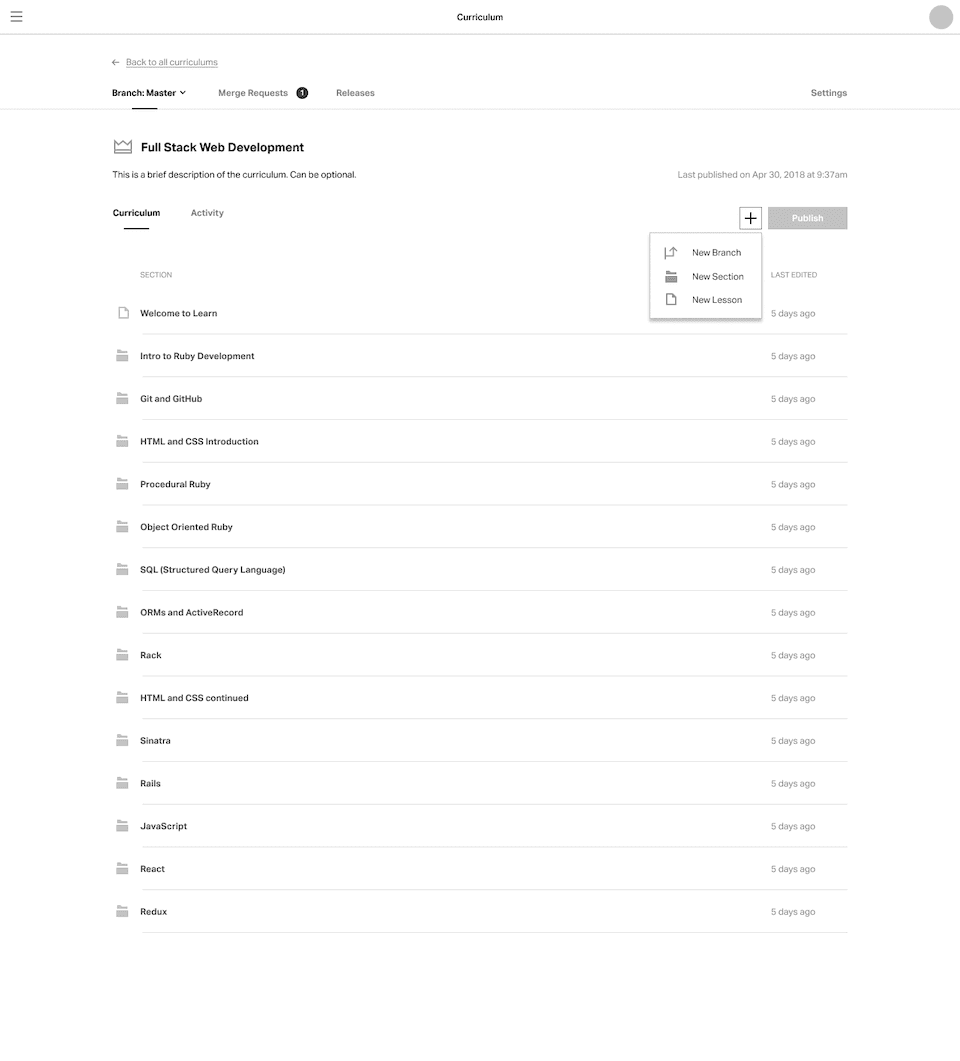
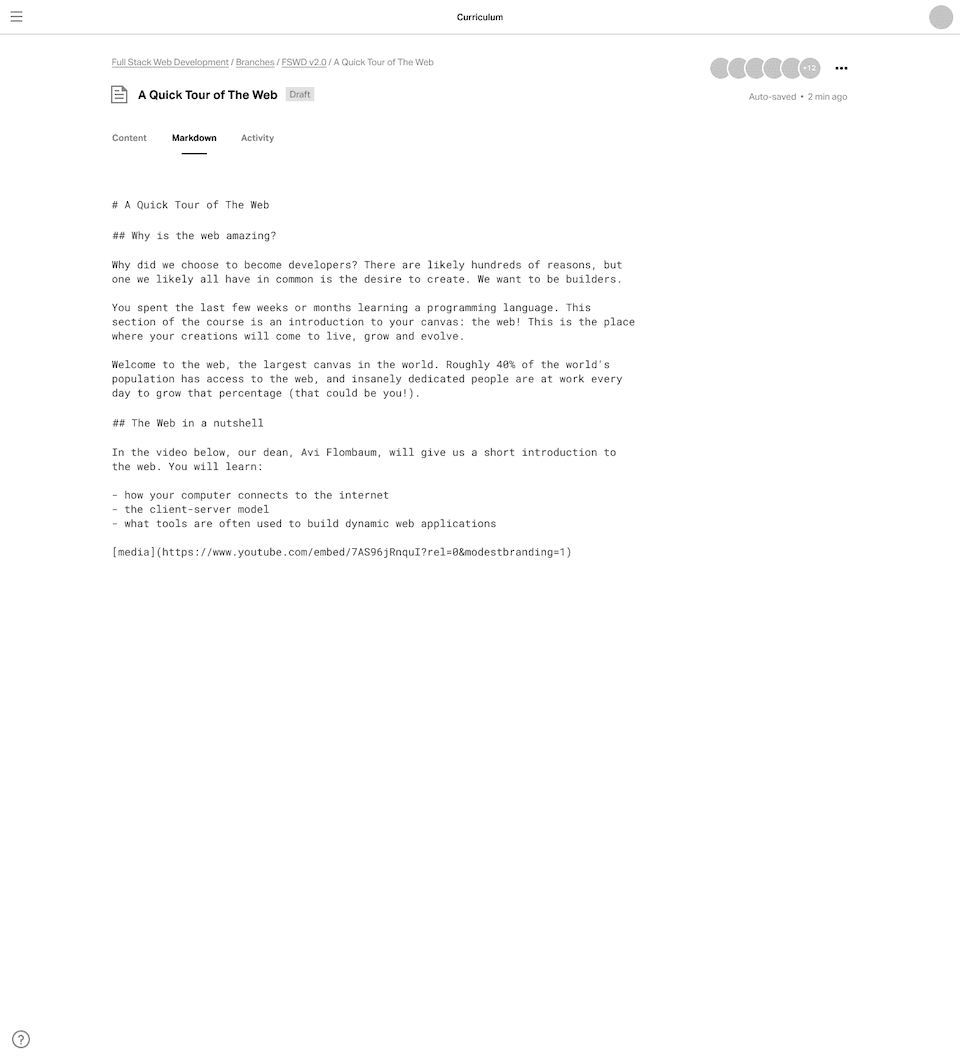

Over the next few hours we discussed what it would take to implement a curriculum management system with git and Github as the backbone, the pros and cons, and how it would work. I think everyone thought I was over-architecting and overengineering a solution to a problem that didn't exist. But the work we did that day is still what I credit with birthing Learn.co
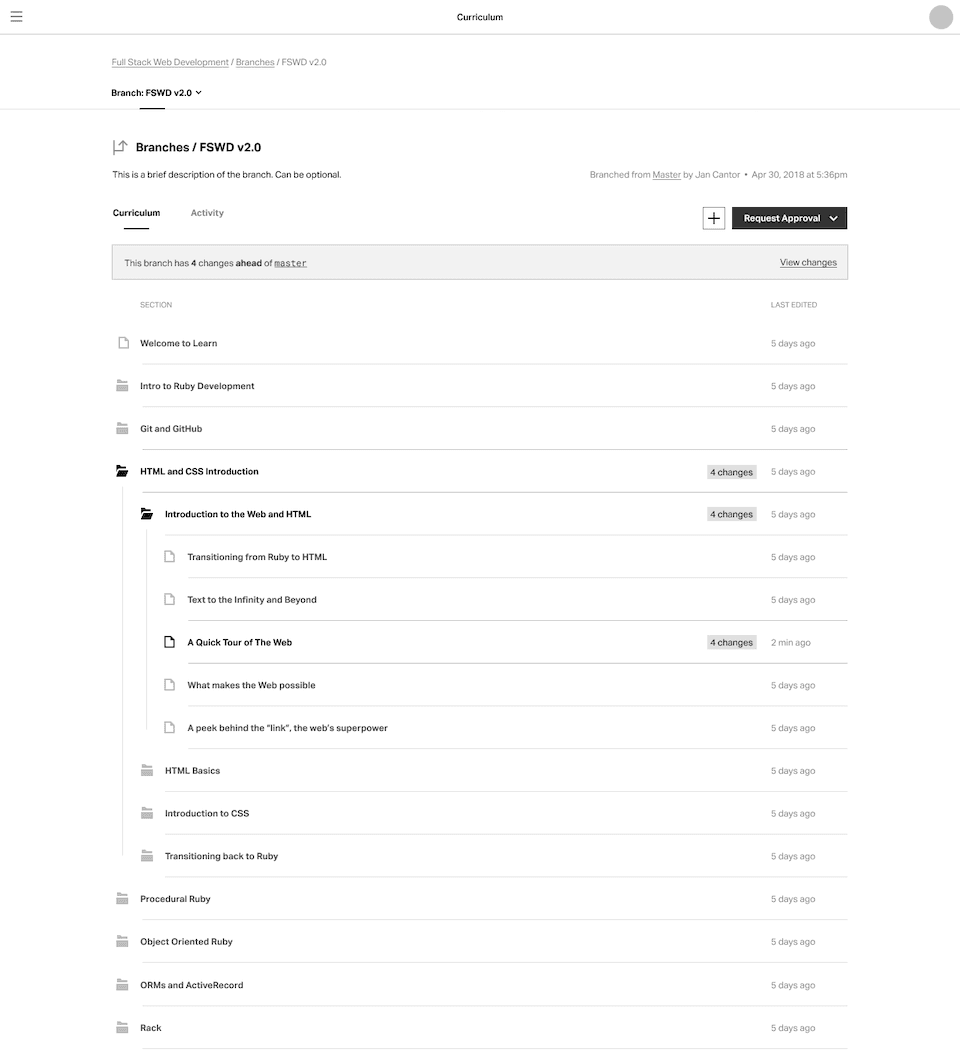
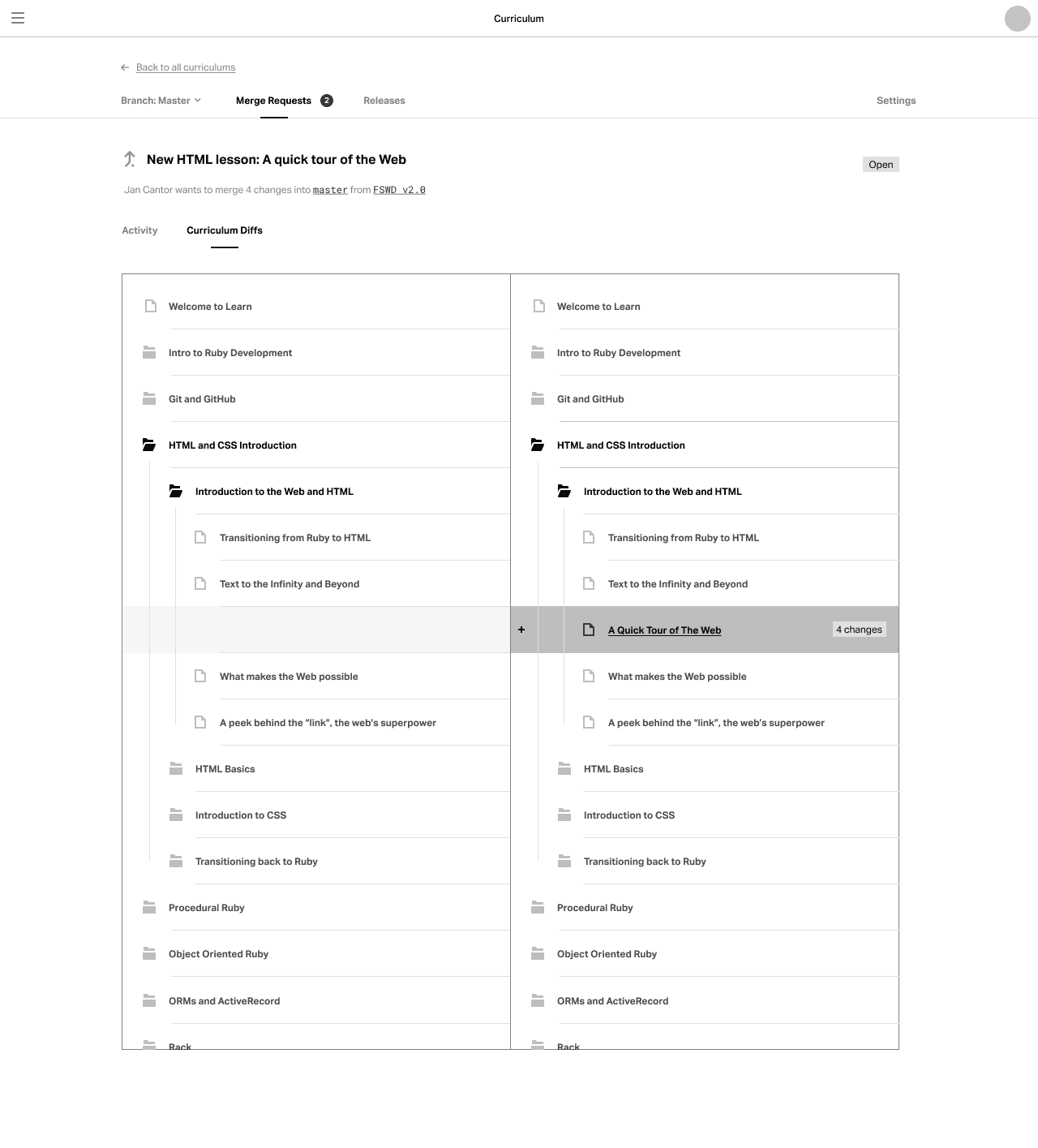
Let's Charge $1000 a Month

Colloquially known as Ironboard (you know, your Flatiron Dashboard), the tools we built to manage the curriculum began extending to managing the cohorts themselves. Because we were storing our lectures in the form of README.mds in repos in Github, we could easily give them to students as reference by allowing them to fork a semester specific repository. We began including full demo applications and test suites within these repositories and suddenly our lectures became interactive coding labs. Students could submit them via a pull request. We could monitor that and run the test suites using standard CI systems, essentially auto-grading. Teachers and students could review pull requests and give feedback.
The school was growing but at the same time plateauing in vision. A physical school can only grow linearly and at this point, after raising a second round of venture capital, we need a vision that had exponential scale potential. Grand vision is another thing I've been told I've got and within a few days I had this dream of creating an online campus, not an online course, but an online experience of the in-person program. Its ambition would be to deliver the same quality and outcomes, a greater than 90% job placement rate for graduates, a greater than 80% graduation rate, online. I wanted to take Ironboard, invest even more into its experience and its content, and launch our online school. And I wanted to charge people $1000 a month for it and call it Learn.co.
I presented my intentions at our board meeting and was met with skepticism. "Udacity charges $250 a month for their nanodegree and that's by Sebastian Thurn and backed by Google. That's the high-end price point, you can't go 4x that and expect to win customers," was the basic gist of their message. I said I'd get 250 customers in the first 3 months.
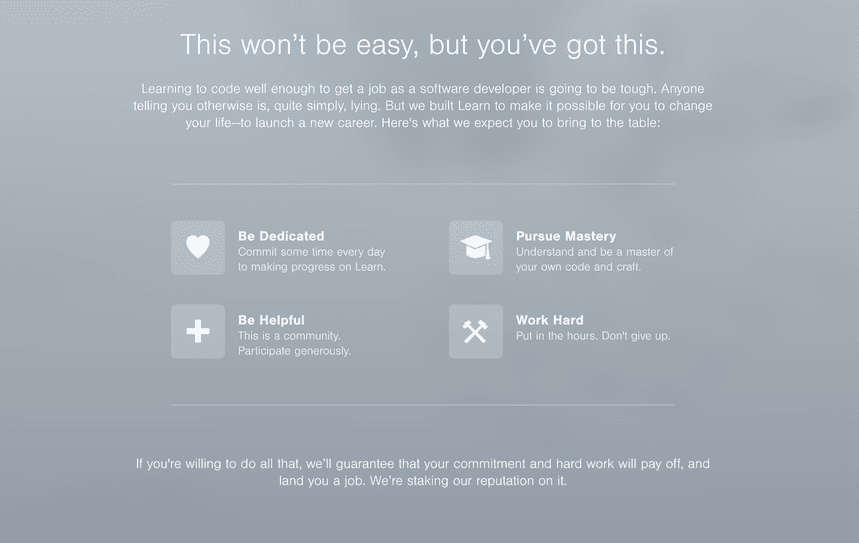
I think what I understood about online education is that people are buying an outcome, an end result. It wasn't that we were selling a course or learning to code or even a job, we were selling change. We'd change your life through teaching you to code and getting you a job. If you believed in our ability to deliver that, the price point was low. This wasn't just online, in-person too, Flatiron School was about changing your life through learning.
And to get people to believe that, we launched with a Job Guarantee, the first in the industry and maybe in education. ROI guaranteed or a full refund.
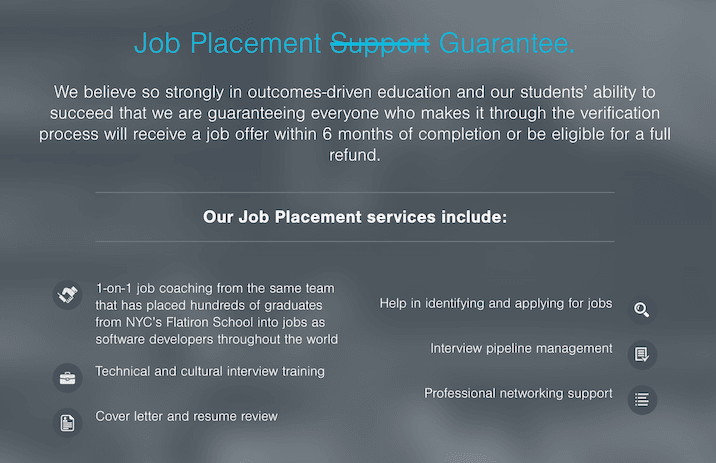
By the new year, Learn.co had 250 customers and growing, as promised. Learn.co ended up generating close to a 10m ARR in its second year. We were acquired after that and until I left, all our courses, in-person and online, were administered through Learn.co, responsible for over 60 million in revenue a year.